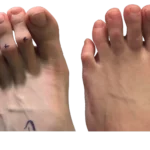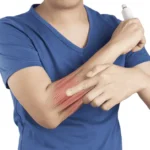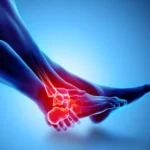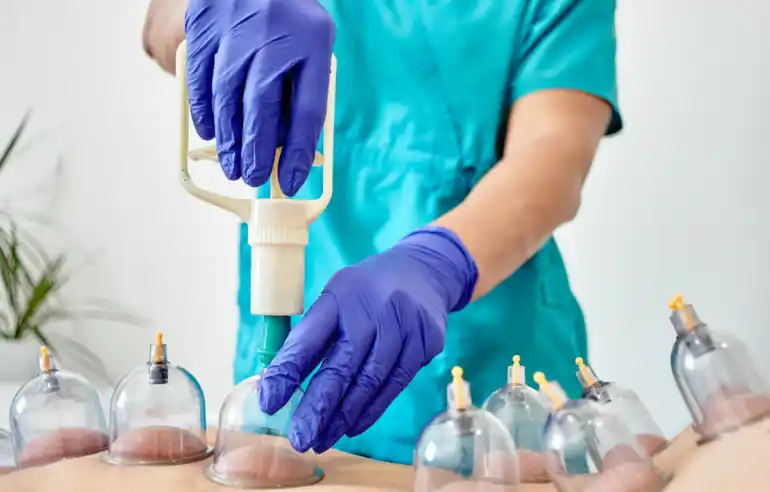Overview
A Rectus Abdominis strain is a relatively common yet often underestimated injury that involves the overstretching, partial tearing, or complete rupture of the rectus abdominis muscle, the prominent, long, and flat muscle running vertically along the front of the abdomen. Commonly recognized as the “six-pack” muscle, it forms a crucial part of the body’s core musculature and is essential for trunk flexion, posture control, and spinal stability. This muscle works synergistically with other abdominal and back muscles to support nearly every functional movement, from bending forward and sitting up to stabilizing the body during sports, lifting, and even breathing.
When a Rectus Abdominis strain occurs, the integrity of the muscle fibers is compromised, leading to localized pain, tightness, weakness, and a noticeable decrease in core stability. The severity of this condition can vary widely, ranging from mild overstretching of the muscle fibers (which may only cause slight discomfort) to severe or complete tears that significantly restrict daily and athletic activities. Individuals often describe a sudden sharp pain or “pulling” sensation in the abdominal region, especially during movements that require trunk flexion, twisting, or powerful contractions such as coughing, sneezing, or lifting heavy objects.
At DMPhysios, a premier physiotherapy and rehabilitation clinic located in Noida, the team frequently encounters Rectus Abdominis strain cases among athletes, gym-goers, and individuals involved in physically demanding routines. The expert physiotherapists at DMPhysios emphasize the importance of early diagnosis and a comprehensive, patient-centered rehabilitation plan to prevent chronic discomfort or recurrence. Since this muscle plays a foundational role in maintaining core integrity and spine health, the specialists at DMPhysios focus on restoring optimal strength, flexibility, and control through a combination of advanced physiotherapy techniques, manual therapy, and progressive core stabilization training.
By integrating evidence-based assessment tools and customized treatment protocols, DMPhysios ensures that each patient receives personalized care tailored to their specific needs, lifestyle, and goals. Whether it’s an athlete aiming for a safe return to sport or an office worker seeking pain-free function, the clinic’s holistic, patient-centered approach supports recovery at every stage, emphasizing long-term spinal health, improved posture, and prevention of future Rectus Abdominis strain injuries.
Symptoms
The symptoms of a Rectus Abdominis strain depend on the severity of the injury, but they generally include:
- Sharp or localized abdominal pain: Typically felt during movements like bending forward, twisting, coughing, or sneezing.
- Tenderness along the abdominal wall: Pain upon touch or pressure over the affected area.
- Swelling or bruising: In moderate to severe strains, visible bruising or swelling may appear around the abdominal region.
- Muscle weakness: Difficulty performing sit-ups or maintaining trunk stability.
- Pain during breathing or laughing: Because the rectus abdominis assists in forced exhalation, these actions may become painful.
- Stiffness and reduced flexibility: Tightness and discomfort when stretching the abdominal area.
Athletes may also experience a sudden “pulling” sensation during activities that involve sudden twisting, heavy lifting, or explosive movements, indicating a Rectus Abdominis strain.
Types of Rectus Abdominis Strain
Like most muscle injuries, a Rectus Abdominis strain can be classified into three grades based on the severity of muscle fiber damage:
- Grade I (Mild Strain):
Involves minimal tearing of muscle fibers. There is mild discomfort, but no significant loss of strength or function. - Grade II (Moderate Strain):
Partial tearing of the muscle fibers occurs. There is moderate pain, swelling, and difficulty in performing certain movements. - Grade III (Severe Strain):
This involves a complete rupture of the muscle or its attachment, often accompanied by severe pain, swelling, and functional loss. In some cases, a visible or palpable defect may be felt along the muscle.
At DMPhysios, each type of Rectus Abdominis strain is carefully evaluated through detailed assessment, muscle palpation, and functional movement testing to ensure precise grading and targeted management.
Causes
A Rectus Abdominis strain usually occurs due to excessive stress placed on the abdominal muscles. Common causes include:
- Sudden trunk movements: Rapid twisting or bending during sports like cricket, tennis, gymnastics, or football.
- Overuse from repetitive activity: Performing repetitive core exercises or movements without adequate rest.
- Improper lifting techniques: Lifting heavy weights without engaging the core properly.
- Direct trauma: A blow to the abdomen in contact sports can cause a strain.
- Weak core stability: When the surrounding muscles (obliques, transversus abdominis, and hip flexors) are weak, the rectus abdominis compensates, leading to overuse.
- Sudden stretching or forceful contraction: Activities like coughing violently or sneezing repeatedly can also trigger a mild Rectus Abdominis strain, especially in individuals with weak abdominal muscles.
Risk Factors
Several factors increase the risk of developing a Rectus Abdominis strain, such as:
- Athletic activities involving trunk rotation (cricket bowling, tennis serves, throwing sports).
- Poor core strength or muscle imbalance between abdominal and back muscles.
- Lack of flexibility in the abdominal wall and hip flexors.
- Inadequate warm-up before exercise or sports.
- Previous abdominal or core injuries.
- Improper training progression or overexertion during gym workouts.
At DMPhysios, athletes and active individuals are educated about these risk factors, emphasizing injury prevention through proper warm-up, flexibility training, and core strengthening programs.
Treatment
The treatment of a Rectus Abdominis strain depends on the severity of the injury but primarily focuses on relieving pain, restoring muscle function, and preventing recurrence.
1. Initial Management (First 48–72 hours)
- Rest: Avoid any activity that aggravates the pain or involves trunk flexion.
- Ice Therapy: Applying ice for 15–20 minutes several times a day helps reduce inflammation and pain.
- Compression: Using an abdominal binder or light compression wrap may support the muscle.
- Pain Relief: Nonsteroidal anti-inflammatory drugs (NSAIDs) may be prescribed under medical supervision.
2. Gradual Return to Movement
After the initial pain subsides, gentle stretching and movement exercises are introduced to maintain flexibility and prevent stiffness.
3. Progressive Strengthening
As healing progresses, core strengthening and stability training become essential to restore muscle endurance and prevent re-injury.
4. Medical and Physiotherapy Support
If pain persists beyond a week or if there’s a complete tear, physiotherapy intervention at a specialized center like DMPhysios becomes crucial for full recovery.
Physiotherapy Treatment
At DMPhysios, physiotherapists adopt a patient-centered rehabilitation approach, focusing not only on pain relief but also on restoring functional strength and preventing recurrence. The treatment plan for Rectus Abdominis strain is individualized and progresses through several stages:
Phase 1: Acute Phase (0–7 days)
Goals: Pain reduction, inflammation control, and gentle muscle protection.
Treatment Techniques:
- Ice therapy to reduce pain and swelling.
- Accelerated Healing Therapy to promote healing.
- Gentle static abdominal contractions (isometric exercises) to maintain muscle activation without strain.
- Breathing control exercises to avoid abdominal pressure during exhalation.
Phase 2: Sub-Acute Phase (1–3 weeks)
Goals: Restore range of motion, initiate gentle strengthening, and improve blood flow.
Treatment Techniques:
- Gentle stretching of abdominal and hip flexor muscles.
- Core stabilization exercises focusing on the transversus abdominis and oblique muscles.
- Light resistance training, such as pelvic tilts, bridges, and side-lying core activations.
- Soft tissue mobilization to reduce muscle stiffness and promote healing.
Phase 3: Strengthening Phase (3–6 weeks)
Goals: Build muscle strength, endurance, and core control.
Treatment Techniques:
- Dynamic exercises like partial curl-ups, planks, and bird-dog variations.
- Functional strengthening involving medicine ball rotations or standing cable pulls.
- Neuromuscular re-education to enhance muscle coordination and control.
- Gradual reintroduction to sport-specific movements under guidance.
Phase 4: Return to Sport / Activity Phase (6+ weeks)
Goals: Achieve pre-injury performance level and prevent recurrence.
Treatment Techniques:
- Sport-specific drills emphasizing trunk stability and control.
- Plyometric and agility exercises to improve dynamic performance.
- Postural retraining and ergonomic education.
- Ongoing monitoring of form and technique during high-intensity activities.
DMPhysios emphasizes proper progression through each phase, ensuring that patients with Rectus Abdominis strain recover safely without setbacks.
Prevention
Preventing a Rectus Abdominis strain involves maintaining strong, flexible, and coordinated abdominal muscles. Key preventive measures include:
- Proper Warm-up: Engage in dynamic stretching and light cardio before core-intensive workouts.
- Strengthening the Core: Incorporate exercises that balance the entire core, rectus abdominis, obliques, transversus abdominis, and lower back muscles.
- Gradual Progression: Increase exercise intensity or load progressively rather than suddenly.
- Correct Technique: Ensure proper form during lifting and abdominal workouts.
- Balanced Training: Avoid overtraining the rectus abdominis without strengthening supporting muscles.
- Adequate Rest and Recovery: Allow sufficient recovery time between workouts to prevent muscle fatigue and micro-tears.
- Postural Awareness: Maintain good posture during daily activities to reduce unnecessary abdominal strain.
At DMPhysios, injury prevention programs include guided warm-up routines, personalized strength assessments, and sport-specific conditioning to minimize the risk of Rectus Abdominis strain recurrence.
Conclusion
A Rectus Abdominis strain can significantly impact daily function, athletic performance, and core stability if not properly managed. Timely assessment, accurate diagnosis, and structured physiotherapy are essential for complete recovery.
At DMPhysios, a leading Noida-based physiotherapy clinic specializing in spine and sports conditions, patients receive personalized, evidence-based care for Rectus Abdominis strain. The expert team at DMPhysios ensures every patient undergoes a comprehensive rehabilitation plan, from pain management to full return-to-sport conditioning, with a strong focus on patient-centered recovery.
If you are experiencing persistent abdominal pain or suspect a Rectus Abdominis strain, don’t ignore it. Reach out to DMPhysios today for expert evaluation and customized physiotherapy care. Their dedicated approach ensures you return to your active lifestyle safely, efficiently, and stronger than before.









